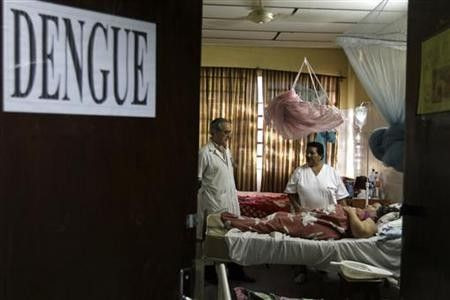Mobile phones may track dengue disease, forecast outbreaks

A new study reveals that mobile phone records can be used to monitor the geographical spread and timing of dengue disease, which can possibly help in preventing epidemics. After utilising the largest data set of mobile phone records ever analysed to estimate human mobility, researchers at Harvard T.H. Chan School of Public Health developed an innovative model that can serve as a critical early warning system for dengue outbreaks.
Dengue is the most rapidly spreading mosquito-borne viral disease in the world, according to the World Health Organisation, or WHO. The organisation estimates that more than 2.5 billion people, or over 40 percent of the world’s population, are now at risk from dengue. WHO claims a large proportion of those afflicted with severe dengue are children, and about 2.5 percent of those affected die. Scientists say that climate change is causing more people around the world to become vulnerable to this deadly virus, as it expands the range of the mosquito that transmits dengue and infected travelers spread the disease across borders.
In the study that appeared in the journal PNAS in September 2015, researchers found that mobile call records show in-country mobility patterns which can be used in accurately predicting the geographical spread and timing of outbreaks in locations of recent epidemics and emerging trouble spots. Over a six-month period, the team analysed cell phone data in 2013 from nearly 40 million mobile subscribers in Pakistan. In collaboration with Telenor Research and Telenor Pakistan, call records were aggregated and anonymised before the analysis was conducted. The researchers chose to study data in 2013, as the country was hit with one of the world’s worst dengue outbreaks that year.
With the help of the mobile phone records, the team was able to trace the Pakistanis’ movement between tiny regions known as “tehsils.” The data showed that an unusually high number of mobile subscribers commuted between tehsils each day, between 2.4 and 4.8 million, especially in the highly commercial Karachi district. The province has been hit with many of the country’s most severe dengue epidemics, including a widespread outbreak in 2011 that infected over 14,000 people.
“Accurate predictive models identifying changing vulnerability to dengue outbreaks are necessary for epidemic preparedness and containment of the virus,” said Caroline Buckee, senior author of the study and an assistant professor of epidemiology. “Because mobile phone data are continuously being collected, they could be used to help national control programmes plan in near real time.” The researchers hope that their model will be used and developed into a type of dengue early-warning system to stop epidemics and subsequent devastating death tolls from happening.
Contact the writer at feedback@ibtimes.com.au or tell us what you think below.





















